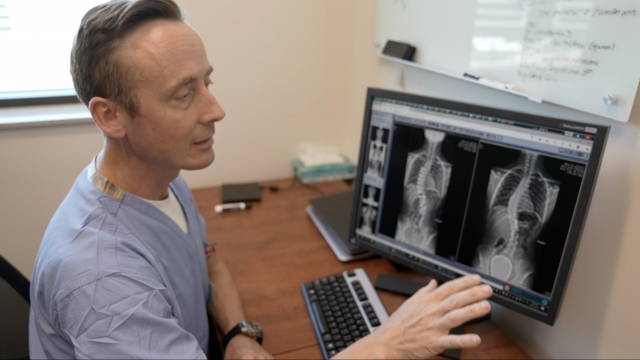For every teenager, having friends who understand you can mean the world. That holds even more true for someone like Addie Jenkins, living with scoliosis — the sideways curvature of the spine.
Addie was diagnosed with it in third grade, wore a brace from fourth through eighth grade, and then had surgery in the middle of her eighth grade year. Now at 14 years old, she is the leader of the Colorado chapter for Curvy Girls International, a scoliosis peer support program.
"I like the relationships and the people that I've met through it," Addie told Scripps News. "It just helps you to not feel alone and to just hear other sides of the story."
Communities like this didn't exist when her mother Jill was going through a similar experience when she was a young girl.
"There was not an option when I went through it," she said. "A brace was a brace, and there weren't different kinds, and there was not PT (physical therapy), and infusion was the only surgery."
Beyond community resources, treatments have also drastically changed.
"In fact, I went to PT when [Addie] went to PT and found a lot of resources and help for myself," Jill said.

Dr. Jaren Riley is a pediatric orthopedic surgeon with Health ONE in Denver, and he says surgical options are far less restricting now than they were in the past.
"One of the biggest reasons we want to promote scoliosis awareness this year in particular is because the surgical interventions for scoliosis are improving," he said.
"One of the things I think most people fear with spine surgery is fusion, because fusion takes moving segments of spine and makes them no longer movable," Riley added. "There's a newer surgery called vertebral body tethering which we pioneered here in Colorado a few years ago, and is doing very well. [It's] where we can control the growth of the spine and direct it to become straight, but the kids can still move."
The surgery he described is the same one he performed on Addie, which allowed her to jump back into her life more seamlessly than imagined.
SEE MORE: Aspiring model with scoliosis shares her story
Scoliosis affects an estimated 6 million to 9 million people in the United States, according to the American Association of Neurological Surgeons. It's typically seen in children who are 10 to 15 years old, but the cause is still unknown.
While a scoliosis diagnosis may seem scary, Dr. Riley says it's important for kids and their parents to understand what it really means.
"Right off the bat, what everybody needs to know about scoliosis is that one way or another, that kid is going to be okay," he said. "They can play sports, they can ride horses, they can ride roller coasters, they can do all the fun things that everyone else is doing."
With new interventions, experts like Dr. Riley want more parents to be aware, and more pediatricians to be on the lookout, because the possibilities of helping kids at an earlier age have improved significantly. And programs like Curvy Girls have given kids — and parents — an all new support space.
Trending stories at Scrippsnews.com




